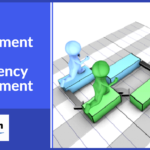Choosing the right project management method is critical to success. You’ll find many different models out there, from classics like the waterfall method to newer options, such as Agile and Scrum. Another option you might consider is MOCHA. What is MOCHA project management, and how does it work?
MOCHA: Breaking Down the Acronym
Unlike most other project management methodologies, MOCHA is an acronym. It stands for (m)anager, (o)wner, (c)onsulted, (h)elper, and (a)pprover. That breakdown is the key to understanding what MOCHA is all about.
In essence, it’s designed to help people involved in the project understand their roles and responsibilities and where those fall in with other people.
Is MOCHA a Methodology?
To be clear, MOCHA is not a project management methodology. Nor is it a style of project management. It’s a framework that can be adopted into any project following any management style or methodology or even used outside the world of project management entirely. Let’s take a closer look at what the five components of MOCHA mean.
- Manager – This is the person who oversees the project. However, they typically don’t do much work on it. This might be a direct supervisor, or it could be an actual manager position. In some cases, this role is filled by a qualified project manager, but that’s not always the case. Senior account leads, creative directors, and others fill this role in some organizations.
- Owner – This is the person who takes ownership of the project and is primarily responsible for moving it forward. Usually, the owner does some project-related work while also ensuring that other team members toe the line. An account executive at a creative agency would be a good example of an owner in this example.
- Consulted – This person does no work on the project but can provide advice and guidance to team members to help keep the project moving forward.
- Help/Helper – Helpers are responsible for doing some of the project work but typically don’t own the project. This could be a design lead in a creative project, but they could also be the owner of another project or a portion of this project.
- Approver – Finally, the approver is the person who signs off on decisions central to the project. This could be an account lead or creative director. If the project is a joint one between two different businesses, it could be someone at the client business who is responsible for approving steps, stages, or deliverables before the project moves forward.
How to Implement MOCHA Project Management
Are you interested in implementing the MOCHA framework? You’ll need to take three specific steps. We’ve outlined those below.
Consent
First, you’ll need to get consent from all those who’ll be involved, beginning with the owner. Never enlist anyone without their knowledge, or the framework will fail. Define who will fill each role and then approach them. Explain the situation, their role and responsibilities, and then ask if they will consent to be part of the project.
Clarify and Define
You must drill down into the project and define the roles and responsibilities that must be filled. There’s no room for ambiguity with this framework. Its entire purpose is to clarify who does what, when, where, why, and how.
Create Tiers
If your project is smaller, you can use just a single tier. However, larger projects benefit from multiple tiers that cascade into one another. For instance, a helper on the top-most tier would become an owner if they required assistance from a helper on a lower tier.
Is MOCHA Right for You?
MOCHA project management can be a helpful framework in many situations. However, it’s not the right option for all projects. MOCHA is best used in situations with specific problems or in projects where it’s important to define roles and responsibilities very clearly.






